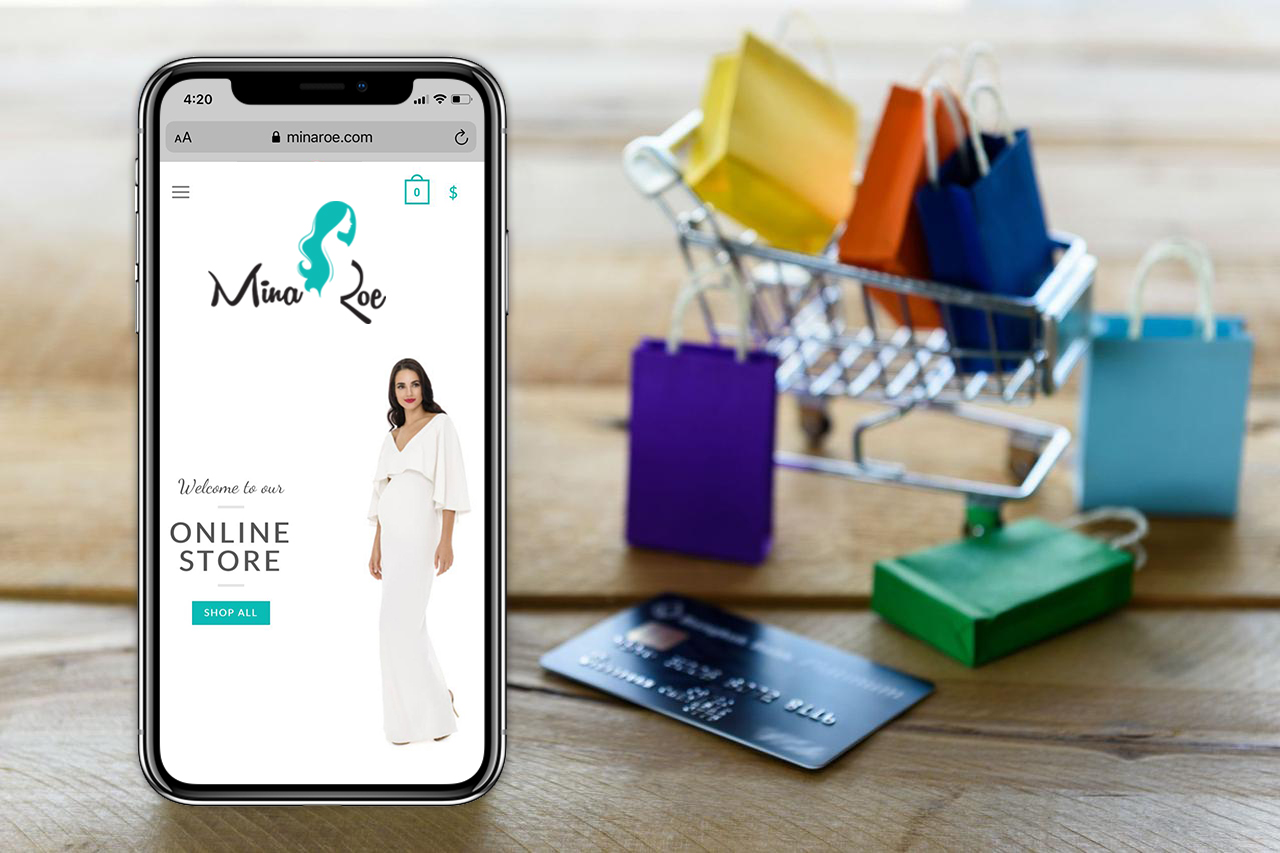A Simple Guide To Ecommerce
To help, I’ve compiled a brief guide below – that offers a streamlined and honest approach, covering important topics like ecommerce marketing, budget management and other tips that are essential for those who are looking to start, build or grow a profitable business online.
START
- Your Product: The first step to building an ecommerce business is knowing what product you want to sell – then how to acquire your product (make, manufacture, wholesale or drop ship) – and finally, evaluate its potential (is there a demand for this product and are you solving a problem?).
- Next, research your competitors: It’s important to thoroughly research your competitors to see A. are they making a profit with this product, B. how to differentiate your brand from theirs, C. mistakes they’ve made that you can avoid, D. their customer reviews, and E. their pricing.
- Get organized: the best way to get organized is by writing a business plan. A business plan is a guide for your business that outlines goals and details how you plan to achieve those goals. Without a business plan you will wander aimlessly and struggle to move forward efficiently.
- Finance/ Budget: Ever heard the saying “it takes money, to make money”? Well, while you don’t need an investor or trust fund to be successful, there is still some truth to this. Here are some upfront costs you may incur that you need to budget for:
- Setup cost – legally register your company, tax ID, inventory (this may include manufacturing and shipping cost), website etc.
- Marketing budget – a small budget to get started is essential, whether it’s for Facebook ads or good quality images to promote on social media, it will require you spending to gain brand awareness. The good thing is, you can decide how big or small you want to go with this.
- Shipping & Fulfillment – shipping can represent a major expense in your business so deciding on whether you’re going to pass the full cost of shipping on to your customers – offer free or flat-rate shipping to absorb some (or) all of the cost is very important. The way to get your products to your customer is through shipping with a courier or local post office. Local post offices are often the cheapest way to ship goods (but not always the fastest or most reliable). If you choose courier (DHL, FEDEX, ARAMEX etc.) it’s important to get a business account to secure the best and lowest possible rates.
- Payment Gateway – A payment gateway refers to the technology that connects merchants and payment networks, this gives your store one or more ways to securely integrate online card processing capabilities. Some of the most popular gateways are PayPal, Stripe and 2checkout (popularity does not necessarily mean they’re the best, always check the fees first).
- Cash on delivery – C.O.D is a type of transaction in which the customer pays for their order at the time of delivery. This is not the most reliable payment method, but it works well in developing countries where e-commerce might be a new market or people prefer to pay in cash.
- Branding: this is where you decide on the name of your brand or business, choose a domain name for your website, social media handles, register your company in your state or country, get a tax ID, create a logo and trademark logo.
- Packaging: Although branded products are not essential right away, its purpose is to provide additional value for your customer and your business by way of creating a positive first impression of your brand. This includes the container/ box/ poly bags, tissue paper, sticker, and shipping material that your customer receives along with your products. As far as shipping packaging, I highly recommend the lightest and smallest (but durable) option to keep the logistics rates low.
- Launch: As you are preparing to launch, you need to consider and create your Terms & Conditions, Returns Policy, Q&A and a checklist to ensure all that I’ve mentioned above is completed.
BUILD
- Customer Demographic: Every business needs to study and identify who its ideal customer is, then you can honestly evaluate whether your product or service is truly compelling enough for this type of customer.
- Marketing: In ecommerce you do not have the advantage of foot traffic, so marketing your store the right way is essential – and learning to do it on your own in the early days of your business is “the secret sauce” to success. From Facebook ads, google AdWords, celebrity/ influencer placements, magazine/ publication features to posting frequently on social media; this generates traffic to your site which ultimately turn into sales.
- Quality control: Every business should strive to add maximum value to their customers, this is achieved by providing a good product or service at a fair price, in the timeframe that you promise. This ensures two vital things: A. your customers will buy from you again and B, you will have great customer reviews and therefore a great online reputation.
- Recruiting staff/ team: You cannot build a good business without good people, staff are your number one asset and you must learn how to recruit quality people and get them fully committed to the values of your brand. If your staff don’t believe in your dream or vision for your brand, they will not be able to help you make it a reality.
GROW
- Reinvesting profits: In the early years of any business, it is vital to be fully committed to growth and not to get distracted from your long-term goals. If you get comfortable and start removing capital out of your business, you will starve it of the fuel that it needs to grow. By re-investing your profits, you can expand faster, reach more customers, manufacture more products, hire better quality staff, buy more equipment and move to bigger premises. By focusing on these things early on you will experience the compounding effect on the growth of your business.
- Manufacture cheaper: As you sell more products, you must produce more! This is great as it means that you have stronger buying power with your suppliers and manufacturing partners and you can experience efficiencies of scale. This means that the more you order or purchase, the cheaper each unit is, and this results in the ultimate prize for any business – BIGGER profit margins.
- Expanding product line: As you grow you will identify gaps and opportunities in your product offerings, always listen to feedback from your customers and give them what they want. This means that you will need to come up with new product ideas and keep up with new trends, adding new products to satisfy the demand of your existing customers and to help attract new ones.
- Repeat customers: Your customers are a huge asset to your company, they can drive sales to you by telling others about your products and of course they can come back and buy from you again and again. In order to maximize repeat business from your existing customers, you must have efficient and effective customer service in place, have new and existing products that people want to come back for, and ensure that the products you sell are good quality. The best thing about repeat customers is that your profit margins on these sales are far higher, as you are not paying acquisition costs from marketing etc.
- Scaling: By the time you get to this stage, you should be thinking of a strategy for scaling your business that focuses on increasing revenue while also increasing efficiency. What I mean by that is, you should be finding ways to add revenue at a faster rate than you take on new costs. For example: adding someone to your team might increase your sales, but if that person’s salary is the same or almost as much as your additional revenue – that is growth not scale. Scale would be adding a product or service for $100 and your revenue from that is $10,000.
Starting any business is as exciting as it is challenging – and ecommerce is no different. You’ll continue learn as you grow and after a while, it will become easier. Remember that it takes time to build a strong and successful business and you will face many obstacles but NEVER QUIT!
Leave a comment
Please share your thoughts with us!
top reads
 Sep 30 2020Do We Lose Ourselves After Kids?
Sep 30 2020Do We Lose Ourselves After Kids? Oct 1 2020Diastasis Recti
Oct 1 2020Diastasis Recti
Let’s Be bff
Sign up to be the first to know what I’m up to! xo
Lesa Milan on instagram
Error: No posts found.
Make sure this account has posts available on instagram.com.




